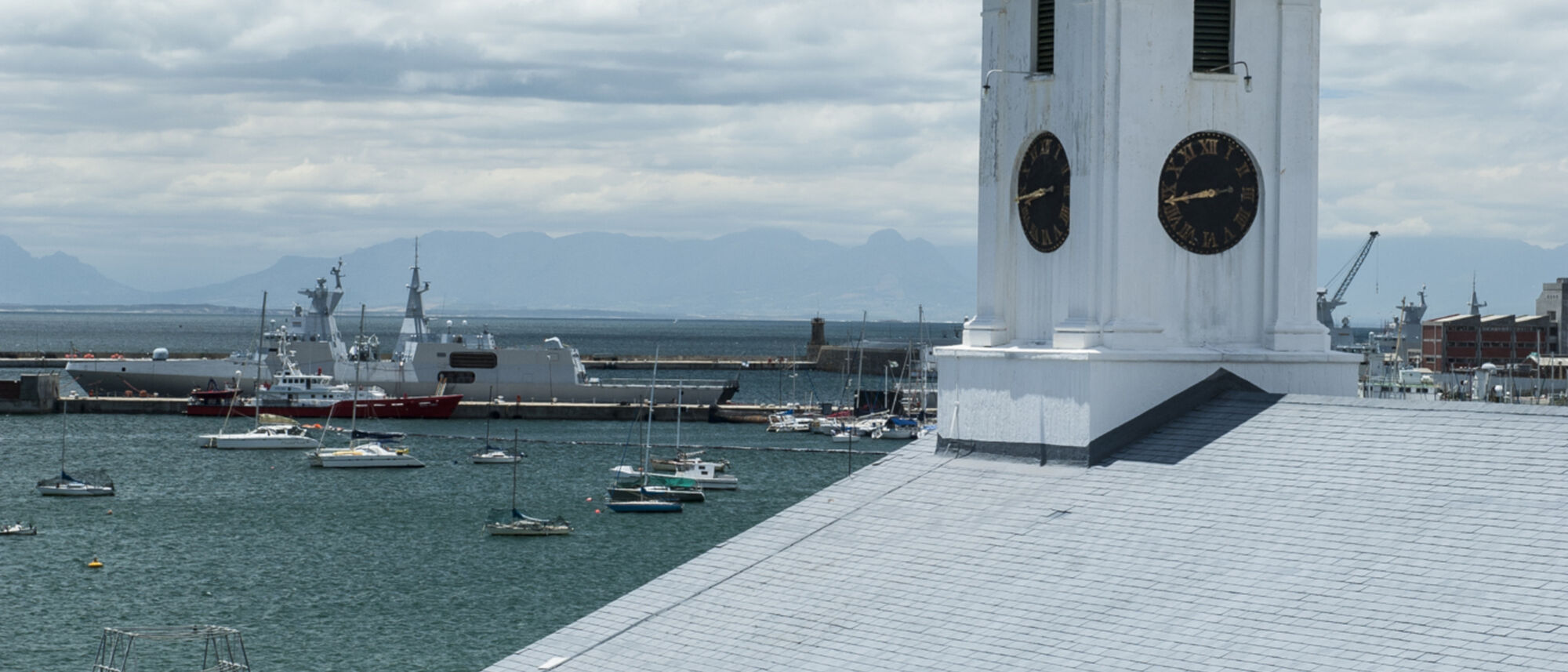I wanted to experience this charming old naval town on the western shores of False Bay on foot. Arriving in Simon’s Town, I parked at the station and set off along St George’s Street heading south. (A visit to the local tourism information centre had armed me with a Historical Mile booklet for guidance.)
This urban meander is a journey through the town’s fascinating history, from the early days when the Dutch East India Company chose the bay as a winter anchorage in 1741, to the Second British occupation of 1806, and up to the present day. The façades of the high street have hardly changed in a century, thanks to strict zoning and historical conservation, and present a delightful mix of Cape Dutch, Cape vernacular and Victorian ‘broekie lace’ architecture.
The first building on my left was Admiralty House – a magnificent, white wedding cake built in 1743 and set in a large garden with its own private beach. On my right, a little further on, was Studland, with a building known as Yara Yara next door, built in 1797 as a wine house.
On the corner of Court Road stands the beautiful St Francis Church (1837), an Anglican church built of dressed stone with a little garden of remembrance. Next to it is the Simon’s Town Museum, packed with memorabilia, and well worth an hour or two’s browsing.
The route continues along St George’s Street, passing the South African Naval Museum with its elegant clock tower – also worthy of a detour – and the remains of an aerial ropeway that climbed the hill above the bay. This used to transport ill or wounded sailors from the dockyard below to the naval sanatorium on top of the mountain.
A bit further on is the elegant Prince Alfred Building (1802) with a balcony that stretches across its front linking all the rooms. Wedged in among taller buildings, a bit further on, is the gorgeous little De Beers Building designed by Herbert Baker. And just beyond it, lies the grand British Hotel – a stately gabled edifice, balconies and flags. The famous Victorian architect John Parker designed this iconic hotel, as well as the adjoining ABC Building, the United Services Institute, Simon’s Town High School (now the Public Library), various shops and private houses along the Historical Mile. Parker was thus responsible for much of the Victorian look and feel of the high street with its balconies supported by slender cast-iron pillars and decorative, filigree fretwork.
Reaching the ornate East Dockyard gates, I turned back and retraced my footsteps. By this time, I needed refreshment, so I ducked down Wharf Street for a tasty fish and chips at the Salty Sea Dog, before taking a slow wander back to the station.
Take an audio tour of the Historical Mile with VoiceMap.



















